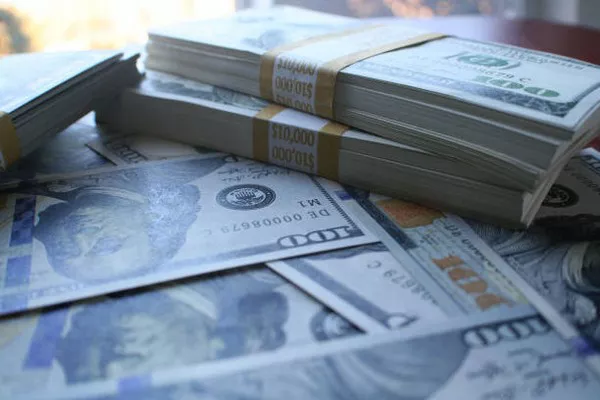In the United States, the dollar bill is not just a piece of paper but a symbol of economic stability and national identity. With its distinctive design and various denominations, the dollar bill holds a significant place in commerce, finance, and everyday transactions. Understanding the range and diversity of U.S. dollar bills is crucial for both citizens and visitors alike. In this article, we delve into the different denominations and variations of dollar bills, exploring their significance and impact.
The Evolution of U.S. Dollar Bills
Historical Overview
The history of U.S. dollar bills dates back to the late 18th century, with the introduction of the first official currency by the newly formed federal government. Initially, these bills were issued in denominations ranging from $1 to $10, featuring intricate designs and engravings reflective of the time period.
Expansion of Denominations
Over the years, the range of U.S. dollar bills expanded to accommodate the growing needs of the economy. Additional denominations such as $20, $50, and $100 were introduced to facilitate larger transactions and address inflationary pressures. Each denomination bore unique designs and security features, aimed at preventing counterfeiting and ensuring the integrity of the currency.
The Diversity of U.S. Dollar Bills
Denominations
Currently, U.S. dollar bills are issued in six primary denominations: $1, $2, $5, $10, $20, and $100. Each denomination serves a specific purpose in daily transactions, with smaller bills commonly used for minor purchases and larger bills for significant expenses.
Design Variations
While the basic design of U.S. dollar bills remains consistent across denominations, there are subtle variations that distinguish each bill. These variations include changes in color, imagery, and typography, reflecting the historical significance and cultural diversity of the United States.
Security Features of U.S. Dollar Bills
Watermarks and Security Threads
One of the most prominent security features of U.S. dollar bills is the presence of watermarks and security threads embedded within the paper. These features are designed to deter counterfeiting by making it difficult to replicate the intricate patterns and textures of genuine currency.
Microprinting and Color-Shifting Ink
Microprinting and color-shifting ink are additional security measures employed in the production of U.S. dollar bills. Microprinting involves the printing of tiny text or symbols that are visible only under magnification, making it virtually impossible to replicate using standard printing techniques. Color-shifting ink, on the other hand, changes color when viewed from different angles, further enhancing the bill’s authenticity.
The Role of U.S. Dollar Bills in the Global Economy
Reserve Currency Status
The U.S. dollar holds a special status in the global economy as the world’s primary reserve currency. This means that many countries hold significant reserves of U.S. dollar bills as a store of value and a medium of exchange in international trade and finance.
Impact on Exchange Rates
The prevalence of U.S. dollar bills in global transactions has a significant impact on exchange rates and currency markets. Fluctuations in the value of the dollar can have far-reaching consequences for international trade, investment flows, and economic stability worldwide.
FAQs About U.S. Dollar Bills
Are there any plans to introduce new denominations of U.S. dollar bills?
As of now, there are no official plans to introduce new denominations of U.S. dollar bills. However, the Federal Reserve regularly assesses the need for currency updates and may consider new denominations in the future if deemed necessary.
Why is the $2 bill less commonly circulated compared to other denominations?
The $2 bill is less commonly circulated due to several factors, including misconceptions about its authenticity and limited demand in everyday transactions. Nevertheless, $2 bills remain legal tender and are still produced by the U.S. Bureau of Engraving and Printing.
What measures are in place to prevent counterfeiting of U.S. dollar bills?
The U.S. dollar bills incorporate various security features such as watermarks, security threads, microprinting, and color-shifting ink to deter counterfeiting. Additionally, law enforcement agencies and financial institutions actively monitor and investigate counterfeit activities to safeguard the integrity of the currency.
Can damaged or mutilated dollar bills still be used as legal tender?
Yes, damaged or mutilated dollar bills can still be used as legal tender, provided that at least 50% of the bill is recognizable and the serial number is intact. However, heavily damaged bills may need to be exchanged at a bank or through the U.S. Bureau of Engraving and Printing.
What is the lifespan of a typical U.S. dollar bill?
The lifespan of a U.S. dollar bill varies depending on its denomination and level of circulation. On average, lower denominations such as $1 and $5 bills have shorter lifespans due to higher usage, while higher denominations like $100 bills may remain in circulation for several years. However, the Federal Reserve continually monitors and replaces worn-out bills to maintain the integrity of the currency supply.
In conclusion
U.S. dollar bills represent more than just monetary value; they embody the history, culture, and economic strength of the United States. Understanding the diversity and security features of dollar bills is essential for maintaining trust and confidence in the currency, both domestically and internationally. As technology and economic trends evolve, the future of U.S. dollar bills will continue to adapt to meet the changing needs of society while upholding their status as a symbol of stability and prosperity.


